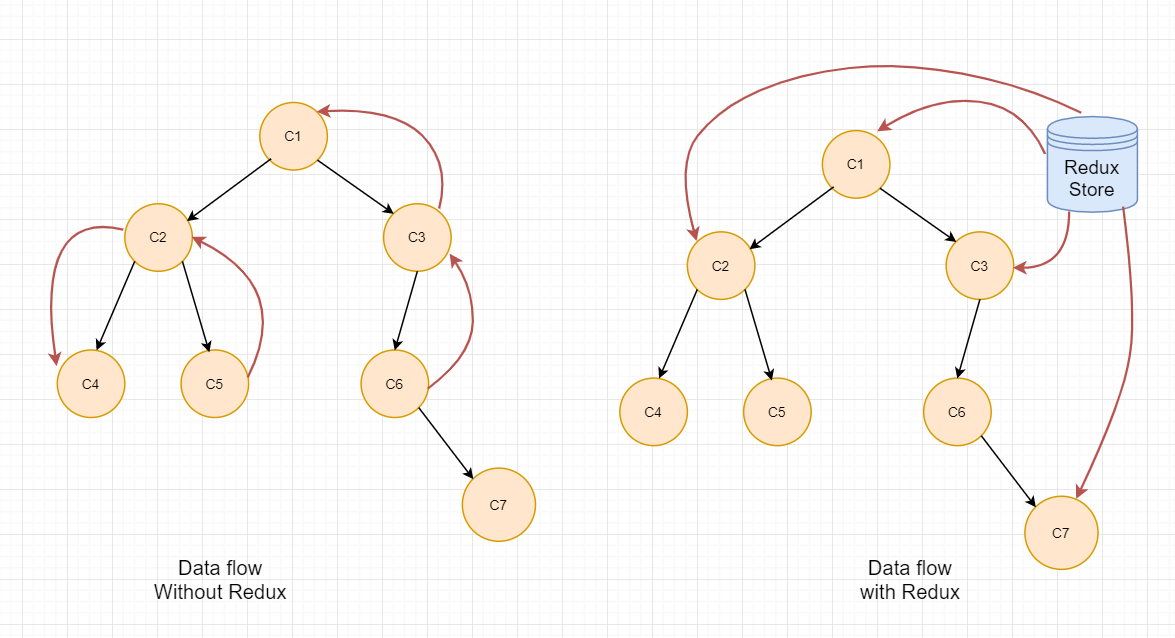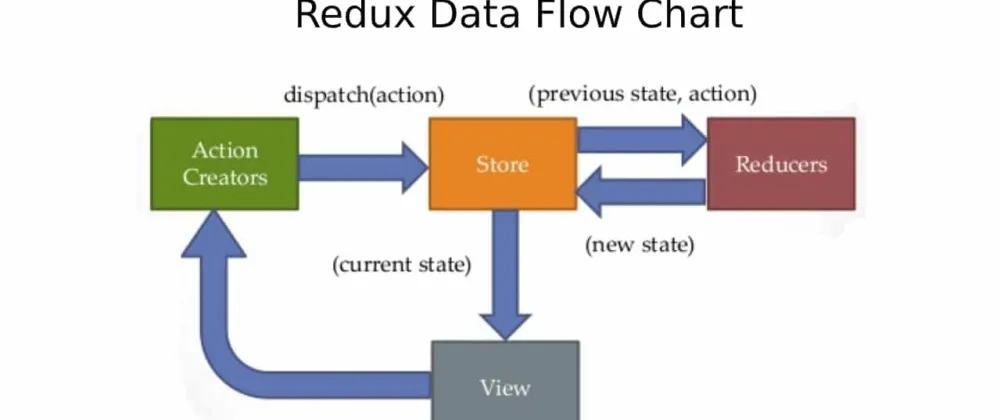[React] Redux
為什麼需要 Redux?
:在大型專案中,state 的數量變得愈來越能掌握,這時候我們需要一個共同儲存 state 的地方,讓我們能夠在任何 component 中使用。
redux 的優點為
- 建立了一個 store 來管理 global state(single source of truth)。

- state 是唯獨的,並且唯一的方法是透過 dispatch action,藉此來達到 immutable 來防止 mutate 到 state。
- 可以把 state 分到個別的 reducer 裡面。
Redux-Flow

三個主要的概念:store, action, reducer
過程:從 store 拿到 state,顯示在 view 上,然後當要做 state 更動時,發起一個 action 到 state 裡的 reducer 裡面,reducer 裡面描述了 action 要如何更動 state,最後被更動的 state 會回到 store 裡面,完成一次循環。
context api+useReducer vs Redux
Redux: 適用於大型得專案,有豐富的 middleware 等第三方套件可以使用。 context api+useReducer:適用於小型專案,學習曲線低且易於使用。。
Redux Thunk vs Redux Saga
Redux Thunk:
:讓 action 可以返回一個 function,而裡面可以做非同步的操作。
缺點:每個非同步操作都需要搭配 action,可能會造成難以管理。
Source Code
function createThunkMiddleware(extraArgument) {
return ({ dispatch, getState }) =>
(next) =>
(action) => {
//在這裡判斷action是不是function
if (typeof action === "function") {
// 是的話就給予其dispatch, getState等方法
return action(dispatch, getState, extraArgument);
}
// 如果傳進來的 action 不是 function,則當成一般的 action 處理
return next(action);
};
}
實際應用
//thunk action => return a function
export function thunkAction() {
return async (dispatch) => {
const result = await new apis.Store(); // call api
dispatch({ types: "xxx", data: result });
};
}
// action
export function action() {
return {
type: "xxx",
data: xxx,
};
}
Redux Saga:
:功能更為強大。
performance problem
- both useSelector and dispatch function will trigger rerender
// in react-redux, you can use batch to prevent triggering multiple rerender!
// **If you're using React 18, you do not need to use the batch API. React 18 automatically batches all state updates, no matter where they're queued.**
import { batch } from "react-redux";
function myThunk() {
return (dispatch, getState) => {
// should only result in one combined re-render, not two
batch(() => {
dispatch(increment());
dispatch(increment());
});
};
}
Resources: